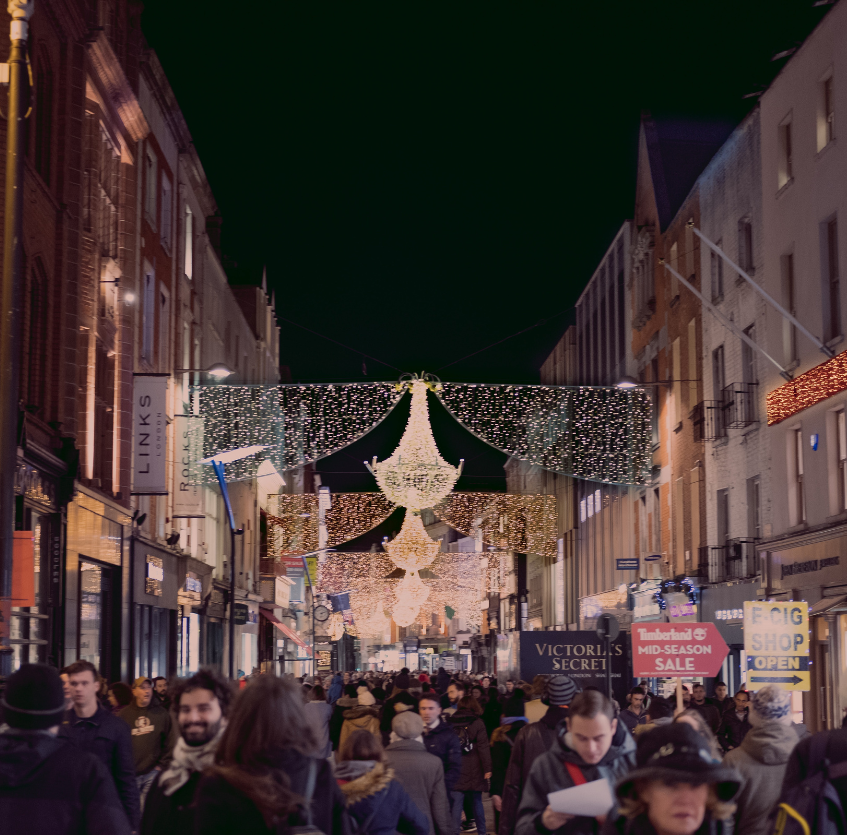As we enter the second half of this year's shopping season, what can we expect? What can marketers do to make the most of Black Friday 2022 with increasingly squeezed budgets?
Consumers and retailers are expected to spend less this year on Black Friday due to the cost-of-living crisis. In the last three months of the year, UK consumer spending on non-essential items is expected to fall by £4.4bn, according to new figures from Retail Economics and Metapack. Although total spending is predicted to fall, a large proportion of consumers might opt to shop for discounted products to maximise overall value. One out of five respondents to a recent Emarsys study of 3,006 US consumers intend to increase their Black Friday spending from 2021, while one in ten will shop mostly for Christmas on Black Friday.
How much money will be spent by different countries during Black Friday:

The UK is estimated to spend around £300 during Black Friday 2022, as per the survey conducted among 12,000 people from 55 countries.
Excess inventory prompts early Black Friday discounts
Retail brands are experiencing inventory problems due to consumers spending less overall. Between April and June 2022, the Federal Reserve Bank of St. Louis noted that excess merchandise contributed 1.9% to the US economic slowdown. As a result, brands now promote discounts year-round rather than just in summer and after Christmas. In response to this, retailers are now extending their Black Friday sales events far beyond a single weekend or day.
Interestingly, not only small retailers or high street stores are heavily discounting in this way. Black Friday deals were launched by Target and Amazon seven weeks before Black Friday, and Amazon's early access sale was launched in October for Prime members. Early sales can help consumers spread the cost of holiday shopping by allowing them to purchase before November. In addition, they allow retailers to respond to customer demand and deliver more targeted discounts on Black Friday (despite any supply chain issues).
Quality service and better value will be big selling points
There is a possibility that retailers will offer even more discounts this year due to the context of Black Friday. Of course, this could be a dangerous tactic since over-the-top advertising might put off consumers.
Therefore, retail brands that have built a strong customer experience and already generate Black Friday success are more likely to succeed. The likes of Amazon, which are already perceived as being value for money and having a winning proposition thanks to Prime delivery, can expect a strong upturn. While Black Friday offers are likely to abound throughout the final three months of the year, we could see retail brands look at other factors, in addition to price-cutting, that could help them stand out.
This year, customers will be attracted to better value and quality service. Over 70% of customers said they wished other marketplaces offered similar services to Amazon Prime, which is the fastest delivery in online shopping. These enhanced services will give retailers an edge over the competition, whether they are Amazon or not.
Long-term customer relations are of utmost importance
Some retailers use anchor pricing to entice customers to purchase products that are regularly on sale throughout the year or make false claims about Black Friday discounts. According to Gert-Jan Wijman, EMEA VP of Celigo, a perceived big deal may make customers even more skeptical.
During these peak shopping days, it is a great time to build relationships with consumers. Customers can be converted into potential lifelong customers not only by selling products and services.
Luxury retailers could face tough times this year
Because of the high expectations of consumers and the potential impact on their premium reputations, luxury brands usually avoid Black Friday discounting. Luxury prices have continued to decline amid supply disruptions and lingering issues due to the Covid-19 pandemic. It is expected that luxury marketplaces like Farfetch and Net-A-Porter will heavily market Black Friday discounts because of these pressures.
It is likely that retailers on the fringes of luxury – such as mid-range brands and retailers who typically sell big-ticket items – will struggle, missing out on consumers (outside of luxury) who may not be willing to spend on special occasions this year.
How should marketers approach Black Friday's strategy amid potential budget cuts?
Marketing strategies are likely to be affected this Black Friday, too, as companies are faced with cuts to advertising and broader marketing. This targeted approach requires more hands-on control over media planning to maximise campaign performance.
This is where first-party data will play a key role, particularly at a time when broader challenges are impacting consumer-brand relationships. Advertisers can compare their first-party data to that of their partners to build highly customised audiences that can deliver a greater return on ad spend than a ‘spray and pray approach.
For media companies, this data powers their addressable audience and provides a direct and authenticated relationship with the consumer. Tapping into this without compromising customer privacy will be essential for advertisers.
A targeted marketing approach will be a crucial investment for retailers in the current economy. Businesses need to look at investing in the tools that best allow them to analyse their campaign success. The ability to assess which promotions, price points, and marketing strategies are working, and then aggregate that information to inform future decisions, is an invaluable tool.

